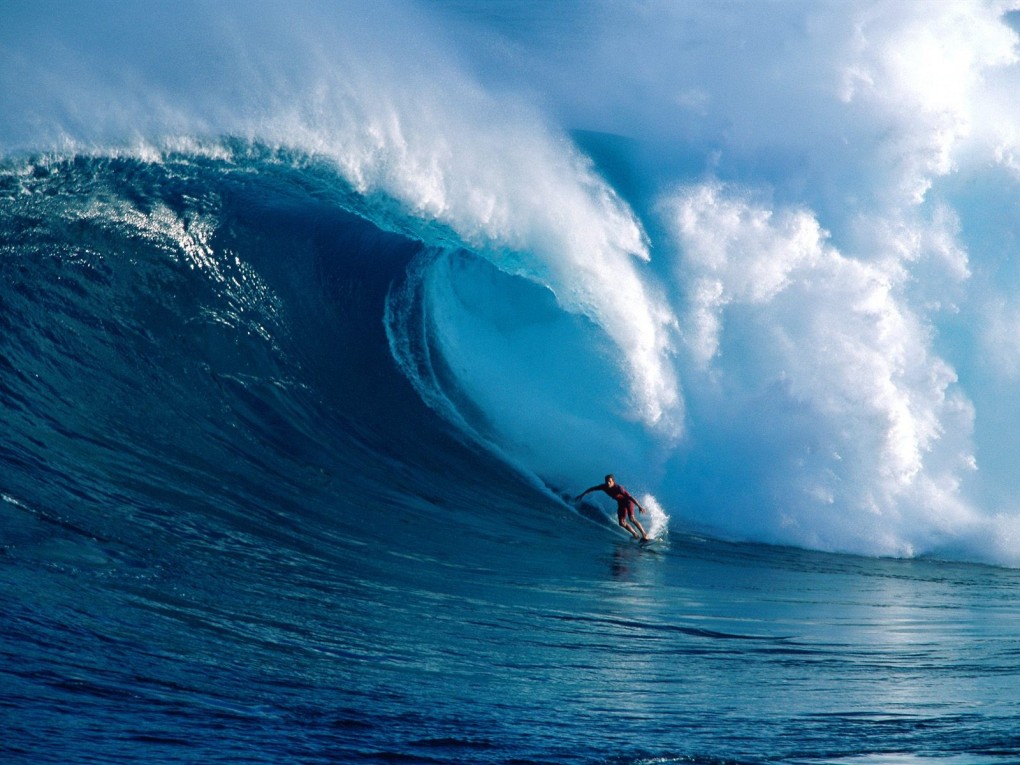
Becoming a big wave rider isn’t easy.
It takes years of time in the ocean, large amounts of natural surfing talent, enormous bravery, a fair amount of money and bundles of passion and commitment.
In addition to all those personal and physical attributes, the modern waterman needs a huge investment in his equipment.
“Any failure in equipment can at beast be a severe beating and at worse, a loss of life”
Any failure in the equipment can lead to a potential life threatening situation. At best that can be severe beating and at worse, a loss of life.
So just what does the modern big wave rider have in his kit bag? A lot as it turns out. You might first want to make sure you have a shed big enough to house it all.
Paddle-in guns
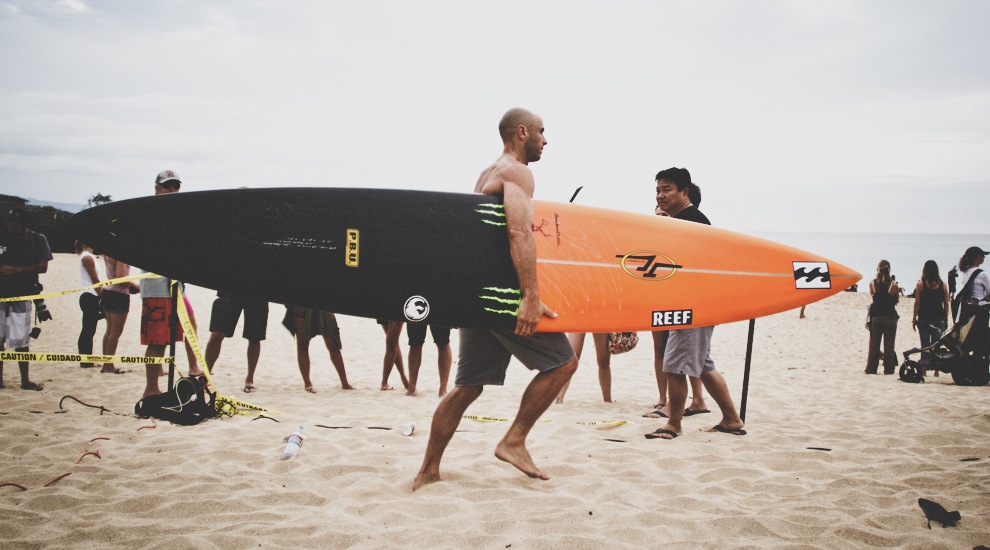
So you want to ride the biggest waves on the planet? Well you are going to need a big board.
The paddle-in guns of today, ridden by the elite surfers in waves like Maverick’s, Waimea Bay and Todos Santos, are usually in the normally in the 9 to11-foot range.
“My board is 11’ 3”, four inches thick and has been glassed twice to make it extra heavy,” said Shane Dorian on the board he rode at Portugal’s infamous Nazaré in 2013. Shane rides quad fins, although some surfers, like the Long brothers, Greg and Rusty, prefer three fins.
If you want one, asking your normal shaper probably isn’t the best bet. These are specialist craft made by specialist shapers.
In the States, John Carper, Chris Christenson and William “Stretch” Riedel are the current paddle in gun gurus. While in Europe, Rob Vaughan makes French big wave surfer Ben Sanchis paddle boards and Gulf Stream make Andrew Cotton’s gun.
Tow board
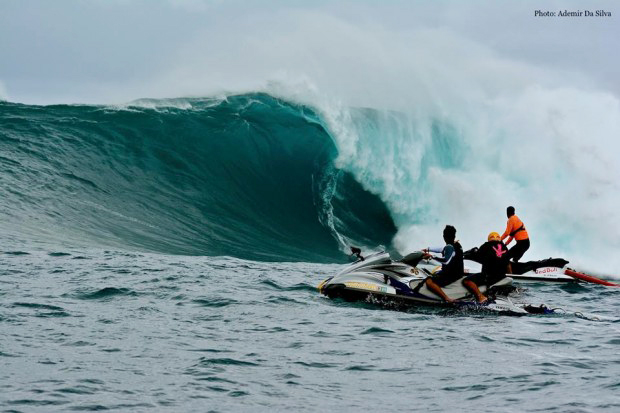
“I hadn’t ridden a tow board in four years, but it was there when I needed it,” says Ian Walsh, one of the world’s premier big wave riders and local at Jaws in Maui. This particular Jaws session was too big too paddle, even for Ian.
Tow boards are typically small, around the 5’8” mark and narrow, around the 16 inches wide, but are super heavy, even containing lead weights, to make up for their lack of volume.
“Paddle in surfing is all our focus,” continues Walsh, “but some waves, like massive Teahupoo for example, are unpaddleable, and in those occasions you need a tow board that works.”
Personal Water Craft (PWC) or Jetski
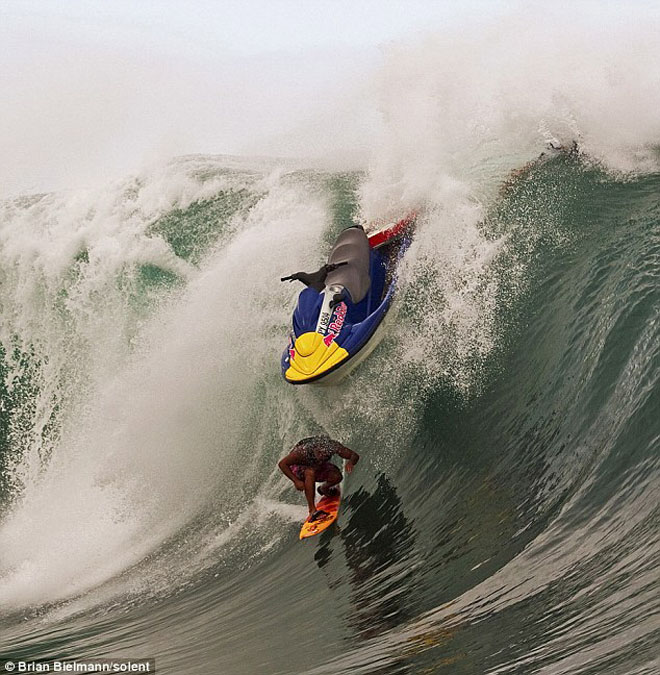
A jetski is mandatory for the modern big wave surfer. If not so much for actually towing into waves, as for the safety aspect of riding big waves.
“Every big wave session, I have a trained lifeguard on a jetski following me on every wave for safety,” says Mavericks hellman Ken “Skindog” Collins from California.
A state of the art ski, with all the necessary attachments (pro floating tow ropes, mounting hardware etc) is the basic pack horse, ambulance and TV studio for the big wave rider.
Without them, the advancements in big wave surfing wouldn’t have been possible.
Rescue sled
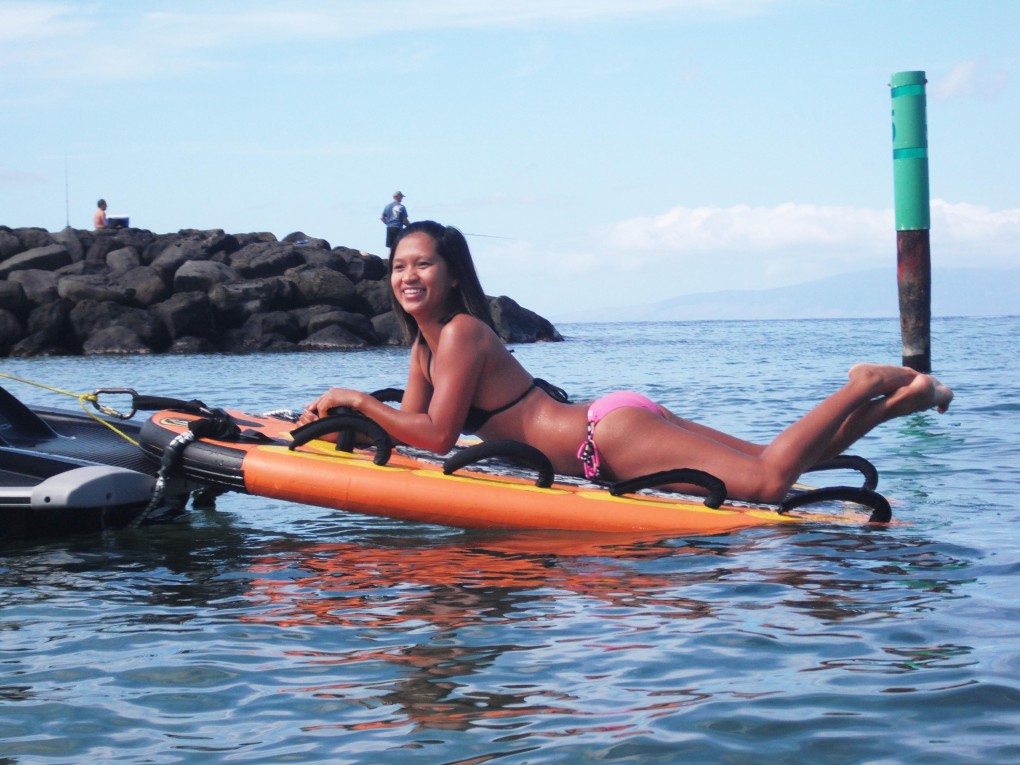
The main purpose of the rescue board is to give surfers in the water something quick and easy to grab hold of, so they can spend as little time as possible in the impact zone and make a clean getaway.
Rather than just holding onto the back of the PWC, a surfer can quickly pull himself—and his board. The Wahoo LifeSled is the leader in big wave surfing rescue boards, and their kits, complete with PWC hardware connections, range from US$900 to $2,000.
If that sound a little expensive, try getting out of the way of a monster set without one.
Inflatable life vests
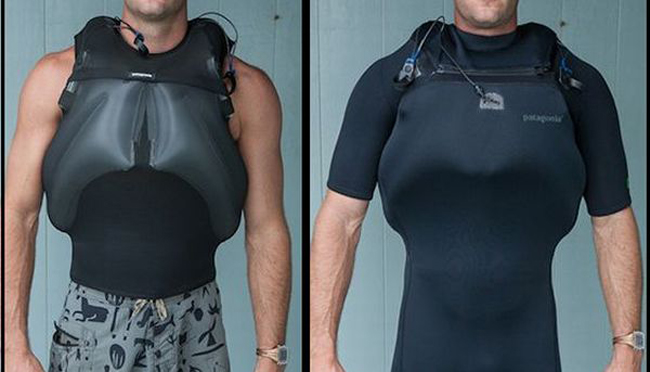
One of the biggest advancements in big wave surfing in the last five years has been the use of inflatable life vests.
These were started by Shane Dorian and his revolutionary Billabong V1 vests, which have a ripcord which initiates the inflating of the vests when the surfer is in trouble. He came up with the idea after nearly drowning while surfing Mavericks.
The surfer pulls the chord, the jacket inflates with air and the surfer is brought immediately to the surface.
Dorian’s jacket design has been taken up by other brands, most noticeably by Patagonia and they are pretty much mandatory in all serious big wave sessions these days.
“You don’t see a single skater riding a half pipe without a helmet. It should be the same thing with big-wave surfing. Riders should wear inflatable vests”
“Garrett [McNamara] was the only guy wearing them. We all thought he looked kind of funny, but he’s still around for a reason,” says Hawaiian big wave rider and Patagonia test pilot Kohl Christensen.
“It probably wasn’t cool back then, but today, fuck it. You don’t see a single skater riding a half pipe without a helmet. It should be the same thing with big-wave surfing. It’s a dangerous sport.”
It is thought that a failure to wear an inflatable life vest by American surfer Kirk Passmore this year at Alligators in Hawaii was a potential reason for his death. “They have made a big difference,” says Dorian, “they help you with confidence and have allowed us to all push the boundaries of what is possible in big wave surfing.”
CPR and First Aid Training
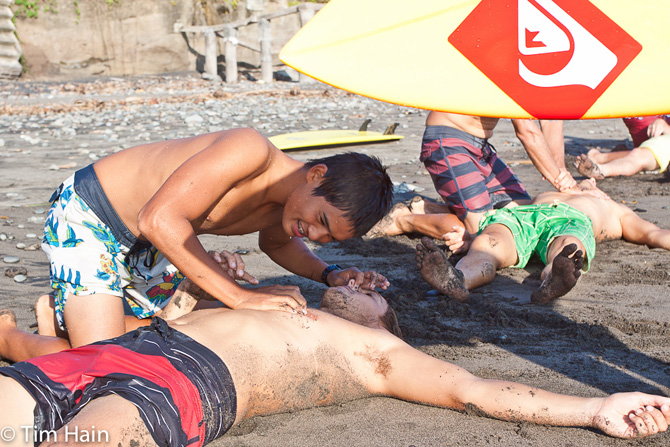
A big wave rider needs to be educated on breath training, emergency reaction situations, CPR, and other scenarios they might be face.
Kohl Christensen, Danilo Couto and Liam and Jodi Wilmott are spearheading a campaign in Hawaii that encourages big-wave surfers from around the world to take notes, so that when shit hits the fan, they’ll know how to react.
Christensen and company hail from a long line of hellmen who surfed big waves before the era of paddle vests, inflation bladders, and safety teams.
The advent and increased availability of this technology, coupled with the tragic loss of close friend Sion Milosky, was enough incentive for them to change their approach to big-wave safety.
You might also like…
Could Andrew Cotton Be The First British Surfer To Win The 2014 Billabong XXL Big Wave Award?